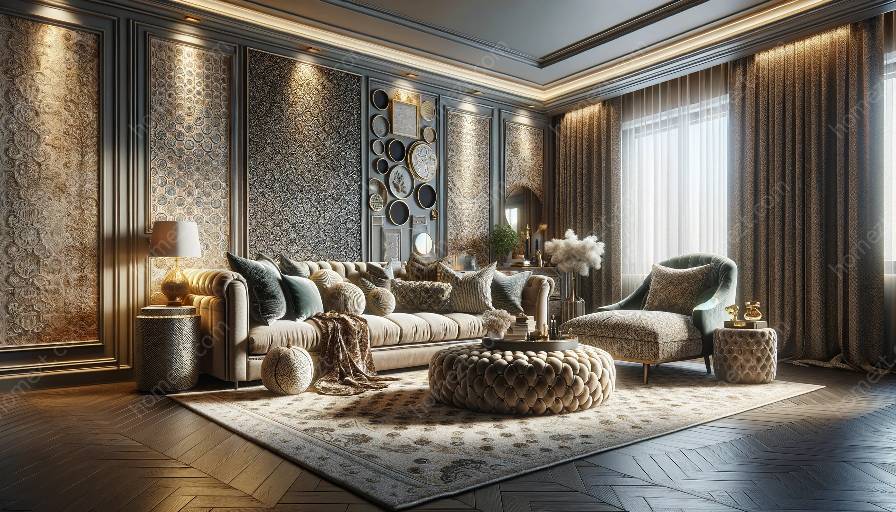Texture and pattern play a crucial role in the aesthetics and functionality of interior design, enriching the ambiance of a space and reflecting the homeowners' personality and style. When utilized thoughtfully, these elements can transform a house into a warm, inviting home, and contribute to the overall comfort and visual appeal.
The Role of Texture and Pattern in Interior Design
Texture: In interior design, texture refers to the tactile quality of surfaces, materials, and fabrics. It adds depth, richness, and dimension to a room, creating visual interest and influencing the overall atmosphere. Incorporating a variety of textures such as smooth, rough, soft, and coarse can evoke different emotions and enhance the sensory experience of a space.
Pattern: Patterns, on the other hand, involve repeated decorative designs or motifs that can be found in fabrics, wallpapers, flooring, and accessories. By introducing patterns, designers can infuse energy, movement, and rhythm into a room, directing the eye and stimulating the imagination.
Using Texture and Pattern to Create Visual Interest
Balance: Achieving a harmonious balance between texture and pattern is key in interior design. When applied skillfully, contrasting elements can coexist peacefully, contributing to the overall aesthetic cohesion. For example, a smooth, leather sofa can be complemented with a textured, knitted throw blanket or accent pillows with a bold, geometric pattern.
Layering: Layering different textures and patterns can add depth and complexity to a room. Mixing materials such as wood, metal, fabric, and glass, alongside incorporating patterns through upholstery, drapery, and wall coverings, can create a visually dynamic and inviting space.
Application of Texture and Pattern in Homemaking
When it comes to homemaking and interior decor, the integration of texture and pattern can significantly impact the comfort and livability of a home. By carefully selecting and combining diverse textures and patterns, homeowners can craft an environment that reflects their personal taste and facilitates a warm and welcoming atmosphere for family and guests.
Textiles and Fabrics: Soft furnishings, such as rugs, throws, and curtains, are essential elements for introducing texture and pattern into a living space. Choosing tactile, high-quality fabrics and incorporating patterns that resonate with the overall design theme can elevate the ambiance and comfort of a room.
Furniture and Accessories: The selection of furniture pieces and decorative accessories offers an opportunity to integrate varied textures and patterns. Using items with different surface finishes, upholstery fabrics, and decorative motifs can add visual depth and character to a room, transforming it into a cozy and visually engaging setting.
In summary, the inclusion of texture and pattern is integral to both interior design and homemaking, serving as powerful tools for creating inviting and personalized living spaces. By understanding the role of texture and pattern and their applications, homeowners and interior designers can enrich the visual and tactile experience of a home, turning it into a true sanctuary of comfort and style.


